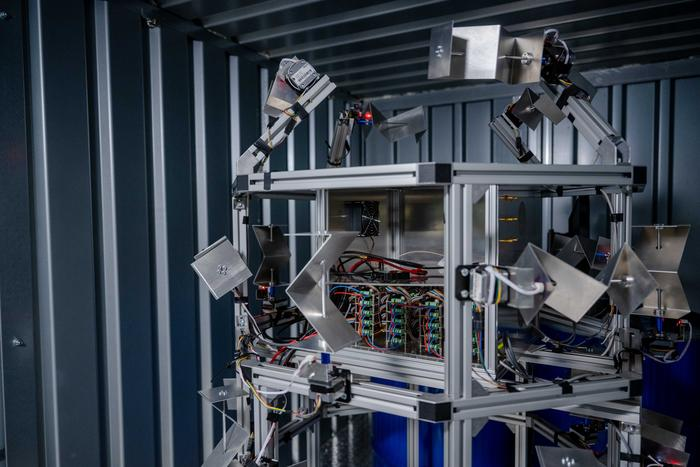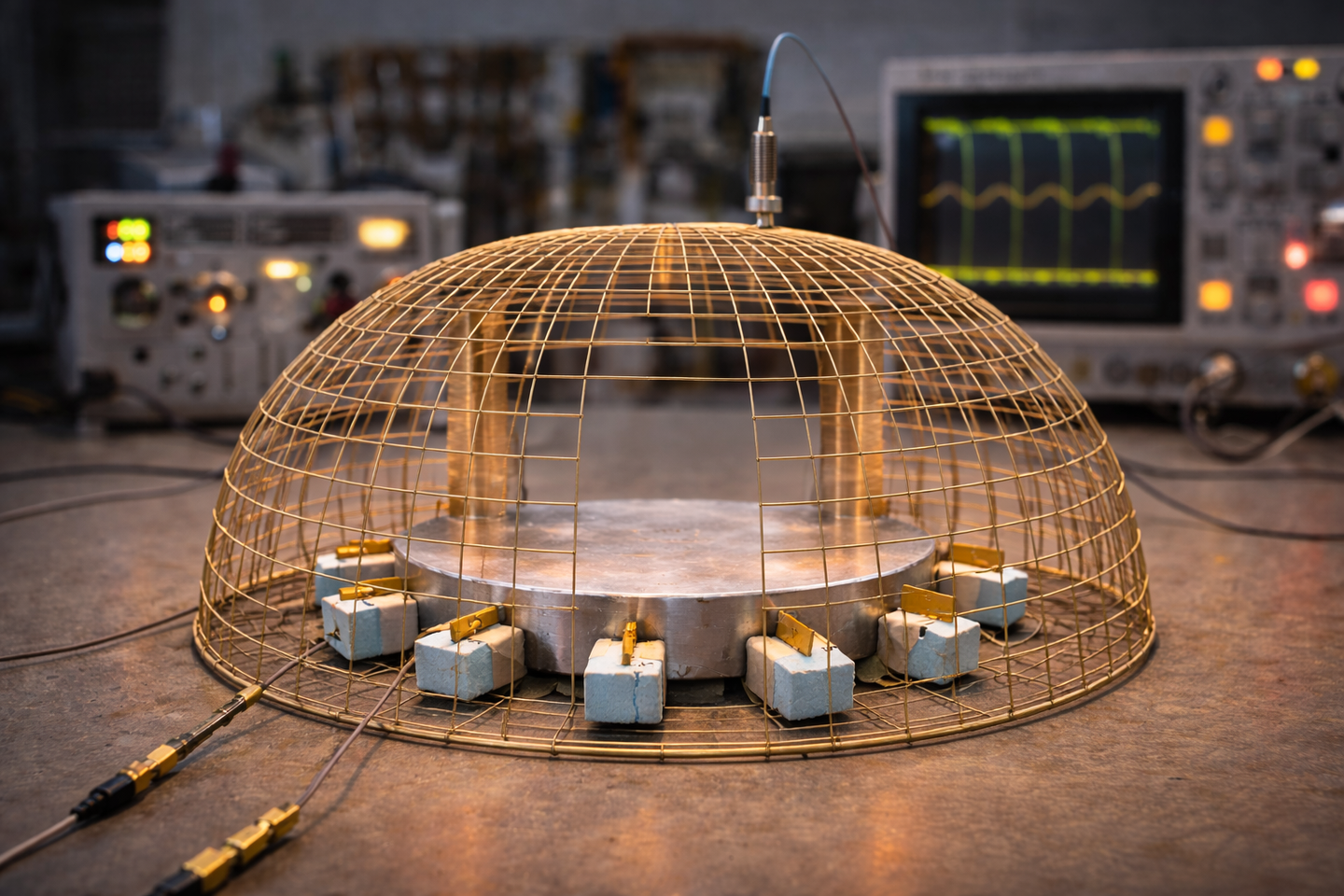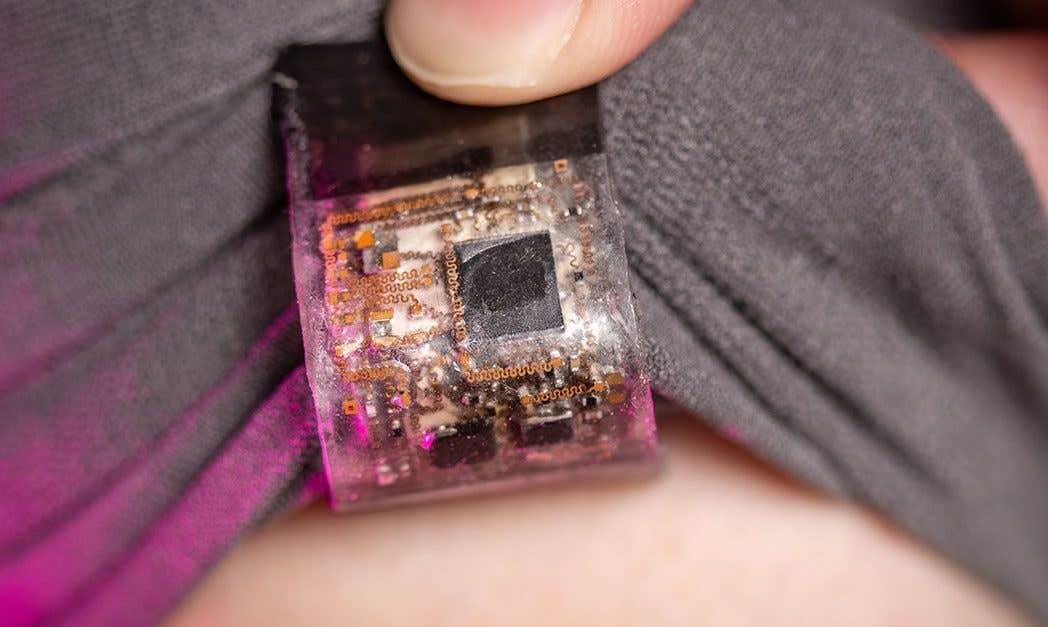Cutting-edge radio technology can police nuclear weapons
An international group of scientists has unveiled a groundbreaking technology to keep an eye on disarmament treaties.

[Nov. 1, 2023: Staff Writer, The Brighter Side of News]
To ensure sufficient safety, several mirrors are needed. The researchers used 20 of them for their experiments. (CREDIT: RUB, Marquard)
In a world where nuclear arms control is of utmost importance, an international group of scientists has unveiled a groundbreaking technology to keep an eye on disarmament treaties. This technology is so precise that even a slight movement in a specific room can be detected from a distance, thanks to the magic of radio waves.
How Does It Work?
Imagine you want to check whether your neighbor moved any furniture in their locked room without actually going inside. Dr. Johannes Tobisch, an expert from the CASA Cluster of Excellence at Ruhr University Bochum and MPI-SP, likens their newly developed method to this concept.
“Our system uses two antennas to record a radio fingerprint of the room," he explains. When one antenna emits a signal, it bounces off walls and objects in the room. The other antenna picks up this signal, creating a unique "fingerprint." If anything inside the room changes, even slightly, this fingerprint will look different. For our global safety, this method can spot major alterations, such as the removal of a stored nuclear warhead.
Related Stories
However, there's a catch. The technology only works if the monitored state (let's call it State B) records the radio fingerprint precisely when the observing state (State A) requests it. Tobisch illustrates the potential challenge: “That would be like someone sticking a photo in front of a surveillance camera.”
To overcome this, a room to be monitored gets equipped with 20 rotating mirrors. These mirrors are crucial because if their positions change, the radio fingerprint changes too. On an initial visit, State A records fingerprints for various mirror positions and stores them secretly. Later, they can ask State B for a current fingerprint, comparing it to their records to ensure no foul play.
Global Implications
Dr. Sebastien Philippe from Princeton University highlights the gravity of this innovation: “Seventy percent of the world's nuclear weapons are stored or awaiting dismantlement, and these 9,000 weapons are currently unaccounted for due to the difficulties in monitoring them. This technology can change that.”
These adjustable mirrors are at the heart of the radio wave technology. (CREDIT: RUB, Marquard)
The research team demonstrated the technology's efficacy using a unique setup: a container filled with movable barrels located at Ruhr University Bochum, Germany. These barrels served as a test for the radio wave technology.
Remarkably, even a tiny shift in the position of a barrel altered the radio fingerprint, proving the system's precision.
In this container, the researchers tested how robust and how reproducible the radio fingerprint is. The technology detects movements of the blue barrel. (CREDIT: RUB, Marquard)
Moreover, the team delved into the security of the mirror setup. They found that using machine learning, an attacker might try to decode the relation between mirror positions and fingerprints. However, with 20 mirrors, the process would take them around eight weeks, notes Tobisch. And with more mirrors? The challenge only grows.
According to Professor Christian Zenger of Ruhr University Bochum and CEO of PHYSEC GmbH, this innovation bridges the worlds of cyber-physical security and radio technology, opening up new possibilities, especially in the realm of the Internet of Things.
a Complete experimental setup housed in a steel container. b The protocol consists of an on-site setup and a remote proof phase. c A challenge C consists of the rotational angle of all 20 mirrors. d Radio-frequency responses for two random challenges. e The measurement error (intra distance, red) over a 4-week measurement campaign in comparison to the inter-challenge response diversity (red). (CREDIT: Nature)
Professor Christof Paar of the Max Planck Institute in Bochum echoes the sentiment, praising the project as a pioneering example of leveraging technology to address societal concerns.
In the shadow of rising global tensions and fears of a renewed nuclear arms race, Sébastien Philippe concludes that this technology couldn’t have come at a more critical time.
Note: Materials provided above by The Brighter Side of News. Content may be edited for style and length.
Like these kind of feel good stories? Get the Brighter Side of News' newsletter.



